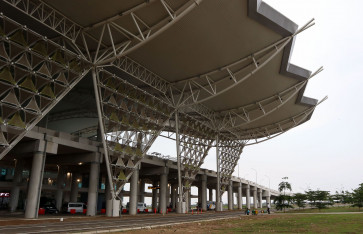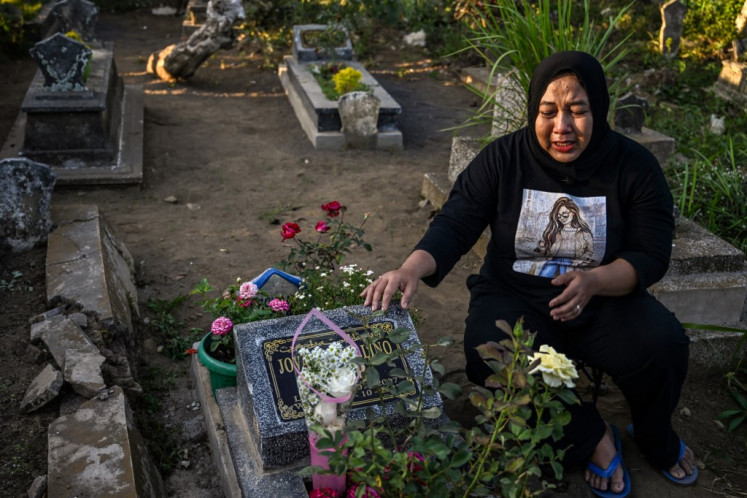Popular Reads
Top Results
Can't find what you're looking for?
View all search resultsPopular Reads
Top Results
Can't find what you're looking for?
View all search resultsOne QR code for all: BI makes new system to ease payment
Kedai 157 cafe was one of the first businesses to test the country’s new Quick Response Indonesia Standard (QRIS) code system
Change text size
Gift Premium Articles
to Anyone
K
edai 157 cafe was one of the first businesses to test the country’s new Quick Response Indonesia Standard (QRIS) code system. At a small booth in Bank Indonesia’s (BI) headquarters, cafe managing director Nala Jati placed the eatery’s QRIS code on top of a doughnut and cupcake display rack.
A customer walked up to the booth, ordered a cupcake and scanned the QRIS (pronounced ‘kris’) code with his Go-Pay e-wallet app. Even though the code was registered under LinkAja, a rival e-wallet, the funds were still transferred to the cafe’s account.
“We used to have three to four QR codes lined up at the counter of our main store. You couldn’t see the pastries. It was like we were selling QR codes instead of pastries. This new code has definitely made it easier for us,” Nala said.
Ease of doing business was one reason why BI initiated the QRIS code system early last year. BI partnered with banks, interbank service providers and e-wallets, among other financial institutions under its jurisdiction, to design the system.
The central bank and its partners, united under the Indonesia Payments System Association (ASPI), have introduced QRIS to the public but they will continue to tinker with the system for the next few weeks before a grand launch.
“It’s a new innovation and thus, we need to carry out literacy campaigns, test the service speed and the transaction fail rates. This is still an ongoing process,” said ASPI chairman Anggoro Eko Cahyo.
Building QRIS involves two technical aspects. On the front-end, BI and its partners needed to develop a more complicated QR pattern that could distinguish every merchant under every financial institution.
On the back-end, BI has so far convinced 16 financial institutions — with five more under way — to either directly or indirectly share data with each other. Indirect sharing would mean using an interbank service provider such as Artajasa, Alto and Link as an intermediary.
QRIS aims to allow users from one payment service to transfer funds to any other service within the central bank’s ecosystem. BI deputy governor Sugeng described this as making local payment systems “interconnected and interoperable”.
The deputy governor added that the bank had chosen to champion QR code technology because its deployment cost was lower than, for instance, chip cards and near-field communication (NFC) tags, which are like the little red “T-cash” stickers for smartphones from Telkomsel.
QR code deployment could be as cheap as printing the code and downloading a smartphone app. While cards and tags require buying a specialized reader machine, which cost at least Rp 450,000 (US$31.6).
He said lower costs were necessary in promoting cashless transactions among Indonesia’s 65 million micro, small and medium enterprises (MSMEs), most of which could ill-afford a card reader machine. Such transactions are then expected to become a gateway to introduce other financial services.
“We believe that such a modern fast payment system is vital to support economic activity in Indonesia, where annual economic growth is still around 5 percent,” said Sugeng.
BI’s Pungky Wibowo, director of payment systems policy, added that he was confident providers would adopt QRIS to reap its benefits, even though the central bank had not issued a regulation mandating its usage.
Go-Pay and OVO, Indonesia’s two most popular e-wallets and heaviest deployers of QR code technology, concurred with Sugeng, saying that QRIS would help accelerate the adoption of cashless transactions in the country.
“Especially among the underbanked population,” said OVO director Harianto Gunawan,” We hope consumers and entrepreneurs, especially those who run MSMEs, can reap the benefits of the digital economy through this initiative.”










